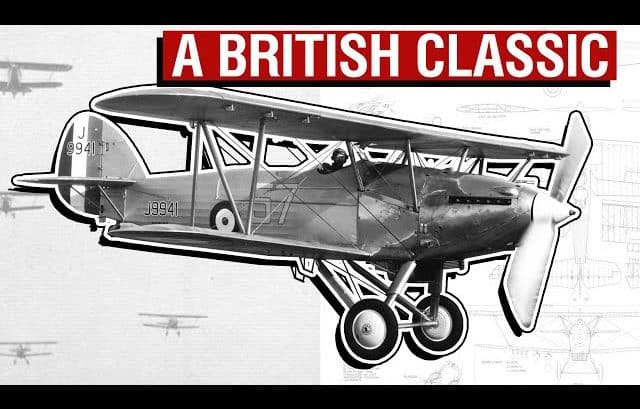The Hawker Hart is considered one of the most successful Hawker aircraft during the interwar years. It is a British two-seater biplane light bomber that served the Royal Air Force.
Here are 10 interesting things that you need to know about this legendary plane:
1. It was the outcome of specification 12-26, issued back in May 1926
It called for the production of a daytime bomber with a maximum speed in excess of 160 miles per hour, or roughly around 257 kilometers an hour.

2. The requirement of building this plane almost felt impossible for manufacturers at that time
Many innovative designs were often sidelined due to cost, especially airframes that use metal structures.
Thus, many manufacturers had to rely on older and outdated engines, resulting in many people thinking the new specifications were nearly impossible to meet.
3. The aircraft design was modified several times
Heavy struts were replaced by much lighter and more durable struts. A pump-operated fuel system replaced the gravity-fed system and the Rolls-Royce F-11b engine was adopted instead.
4. It could hold a crew of two
The pilot would sit under the wing at the trailing edge, operating a single 03 caliber Vickers machine gun that was mounted on the port side of the cockpit.
Meanwhile, the Observer sat behind the pilot, armed with a single Lewis gun on a ring mount, while for aiming bombs, he lay prone under the pilot’s seat. Additionally, an ordnance of up to 520 pounds (249 kilograms) of bombs can be carried under the plane’s wings.

5. It made its first public appearance at the Olympia Aeroshow
The prototype was ready for its first flight in the summer of 1928. It underwent a series of flight trials for six months before its existence was announced.
It demonstrated good performance and handling. During the test flight, it managed to get 176 mph in level flight and an impressive 282 mph in a vertical dive.
6. It became the most capable bomber in service overnight
The No. 33 bomber squadron that is based in Eastchurch, got 12 early Harts in January 1930. The Hart showed significant improvement, and the squadron placed second in the yearly Bomber Command operational contests.
7. No single fighter in service, or about to enter service could catch it
During that time, the Hart became one of the most capable planes fielded by the RAF, full stop. Even the Bristol Bulldog, the main fighter at that time was 10 mph slower.

8. The first Harts were sent across India
It was sent for evaluation to replace the aging fighters currently stationed there, such as the Bristol Fighter and the Armstrong Whitworth Siskin. A tropicalized version of the design was made to cope with the hotter, more humid climate.
9. The scale of Hart production was a rather big achievement for the time
At one time, in 1934, 7 out of every 8th aircraft delivered to the RAF were of Hawker design.
In 1936, at the peak of the expansion plan, 3 out of 4 new squadrons being formed were being equipped with Hawker Hart or some of its subvariants.
10. The RAF used the Hart for its original light bomber role
It was also used for a number of roles, with variants for communications, and operations in India, as well as tropical regions.




